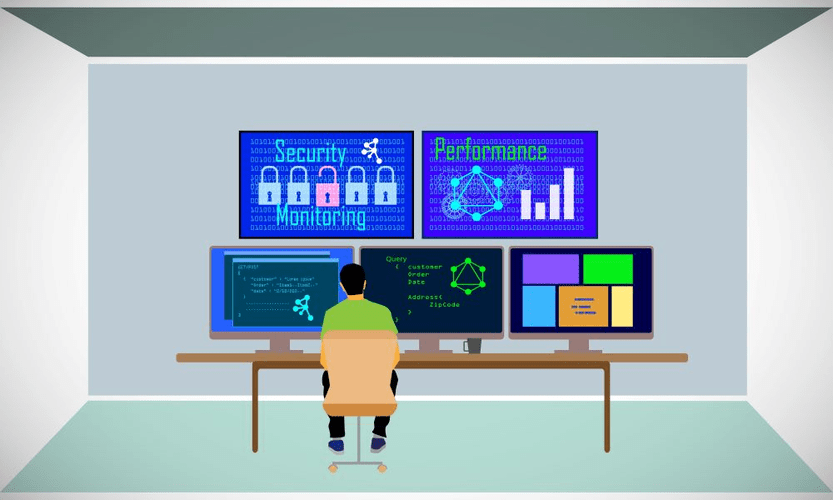Содержание
- Conflict Management Skills: How To Manage Conflict Like A Pro
- Ways To Motivate A Scaling Startup Team
- List Of 10 Benefits Of Team Development
- Norming
- Signs And Questions To Look Out For In The Storming Stage
- What Are The Five Stages Of Group Development Quizlet?
- How To Help Your Team Progress Through The Stages Of Group Development
The team members need to go through the forming, storming, and norming stage before getting to that level. Putting a group of talented people together does not guarantee success too. In the performing stage, you’ll notice fluidity with communication and overall conversations. This is demonstrated through high morale, productivity and engagement. It’s an ideal state for any manager to witness their team’s growth and ask reflective questions.
But, because this stage focuses more on the people than on the work, your team probably won’t be very productive yet. ResourcesBlogLeadership, productivity, and meeting insights to fast-track your way to being a great leader. Slack IntegrationCollaborate on meeting agendas, share notes, and exchange feedback – without leaving Slack. For example, the seven-member executive team at Whole Foods spends time together outside of work. Its members frequently socialize and even take group vacations. Some teams do come to an end, when their work is completed or when the organization’s needs change.
When this happens, it’s important to take stock of what your team needs. Your team feels confident, excited and satisfied with their work. This gives them an opportunity to recognize their abilities as well as those of their teammates. Your team asks questions formulated in ways that are rooted in emotional intelligent practices.
A “can do” attitude is visible as are offers to assist one another. Roles on the team may have become more fluid, with members taking on various roles and responsibilities as needed. Differences among members are appreciated and used to enhance the team’s performance. During the Norming stage, members shift their energy to the team’s goals and show an increase in productivity, in both individual and collective work.
There’s excitement in the air and everyone is ready to roll up their sleeves and get started on the project. Usually, group dynamics and roles have yet to be established, a team leader will typically emerge and take charge and direct the individual members. His theory, which is referred to as Tuckman’s Stages, is centered around his research on the dynamics of teams and team building. His common belief of team development that the stages are all necessary for a group to work together as effectively together as possible in order to see success.
If you reflect on them, they’ll tell you a cohesive story about their strengths, needs and performance. With Toggl Track, team members can track the work that they do. This is especially useful if you have some people that are working remotely.
Conflict Management Skills: How To Manage Conflict Like A Pro
Norms result from the interaction of team members during the development process. Initially, during the forming and storming stages, norms focus on expectations for attendance and commitment. Later, during the norming and performing stages, norms focus on relationships and levels of performance. Performance norms are very important because they define the level of work effort and standards that determine the success of the team.
- So, you host a meeting where your team can get to know one another, their work style, and the way they feel appreciated.
- It illustrates how teams in different fields undergo five similar stages of group development.
- When your team learns more context about what’s required of them in this stage, they’ll feel more confident.
- Commitment to the team’s mission is high and the competence of team members is also high.
- Norms are only effective in controlling behaviors when they are accepted by team members.
- That’s particularly for new teams because members need to get acquainted with each other first before they start to work towards the common goal.
As you might expect, leaders play an important part in establishing productive norms by acting as role models and by rewarding desired behaviors. During the Storming stage, team members may argue or become critical of the team’s original mission or goals. The design team will also develop the school proposal and secure autonomy agreements.
Ways To Motivate A Scaling Startup Team
At the storming stage, members will start to feel comfortable around each other, share ideas, and learn how their colleagues operate in a team setting. Team Tasks during the Storming stage of development call for the team to refocus on its goals, perhaps breaking larger goals down into smaller, achievable steps. The team may need to develop both task-related skills and group process and conflict management skills. A redefinition of the team’s goals, roles and tasks can help team members past the frustration or confusion they experience during the Storming stage. In the adjourning stage, most of the team’s goals have been accomplished. The emphasis is on wrapping up final tasks and documenting the effort and results.
During the forming stage, team members are often optimistic and enthusiastic about getting started. They may also be polite and nervous about how the team will gel. The apprehensive behavior usually arises because members are unsure about the project goals and their roles. However, once that’s explained, they’ll adjust to the roles that await them. In any team, members can’t work in tandem if there’s no chemistry between. A team’s effectiveness gets enhanced by a commitment to ongoing growth and development.
The five stages of group development are critical because it ensures that all the team members are working together to achieve the project’s goal. The emphasis is on building a team that will flourish and helps the organization to achieve long-term success. As the group starts to familiarize themselves, roles and responsibilities will begin to form.
Norms are only effective in controlling behaviors when they are accepted by team members. The level of cohesiveness on the team primarily determines whether team members accept and conform to norms. Team cohesiveness is the extent that members are attracted to the team and are motivated to remain in the team. Members of highly cohesive teams value their membership, are committed to team activities, and gain satisfaction from team success.

But, you can point out areas of improvement or strengths to the group as a whole, without pointing fingers. Business owners, managers, and entrepreneurs are often viewed as team leaders. Groups are so in-sync during the performing stage that it seems to happen naturally. The most effective and high-functioning teams are cultivated. In the performing stage, members are confident, motivated and familiar enough with the project and their team that they can operate without supervision. Everyone is on the same page and driving full-speed ahead towards the final goal.
Encouraging your team to share their ideas and opinions is the key to finding the “big ideas”. If everyone in your group thinks and acts the same, then why do you have a group? The benefit 4 stages of role development of working in a team is that you have access to diverse experiences, skills, and opinions that aren’t possible alone. Create a weekly work plan with tasks and share it with the team.
Those who stand out start to get accepted by their peers as potential leaders. Team leaders should implement measures for managing competition https://globalcloudteam.com/ and potential conflict among members. They also need to streamline competition and ensure the projects they’re handling stay on track.
List Of 10 Benefits Of Team Development
There’s an increased chance of reaching the product goal within the timeline originally set during the forming stage. Sometimes also called the termination, mourning, or ending stage, most, if not all, of the goals of the team have been accomplished. The project as a whole is being wrapped up and final tasks and documentation are completed.

Over the years, I have worked with many teams and have found theses stages to be very predictable. When working on a project, team members need to understand clearly what their roles and responsibilities are. When team members are unsure about their goals, it can create role ambiguity and waste their energy working on unrelated tasks. Participating in the stages of team growth is vital in helping team members to learn about their roles and responsibilities.
Norming
As the work load is diminished, individual members may be reassigned to other teams, and the team disbands. There may be regret as the team ends, so a ceremonial acknowledgement of the work and success of the team can be helpful. Team members feel an increasing acceptance of others on the team, recognizing that the variety of opinions and experiences makes the team stronger and its product richer. Members start to feel part of a team and can take pleasure from the increased group cohesion. The principal work for the team during the Forming stage is to create a team with clear structure, goals, direction and roles so that members begin to build trust. During the Forming stage, much of the team’s energy is focused on defining the team so task accomplishment may be relatively low.
Check out this excellent piece from MIT’s Human Resources group summarizing Bruce Tuckman’s framework of Forming, Storming, Norming and Performing. Your role here is to act as the team’s champion, securing resources and minimizing roadblocks in the organization. Your participation should be much more focused on how the team is tackling problems rather than solving the problems for them. You will still raise issues, ask questions, and challenge approaches, but more to validate the team’s conclusion than to drive it. Leadership belongs to everyone on the team, and the team owns its results.
Signs And Questions To Look Out For In The Storming Stage
As a leader, it’s important to know where your team is and how you can help them move through to the next stage of development. Is an award-winning work management software used for real-time collaboration, planning and monitoring projects, and automating reports. Gantt charts, Kanban boards, customizable dashboards, and custom request forms are Wrike’s 100% scalable features. Wrike also provides time tracking, budget management, and project portfolio analysis. Users’ data are also kept safe with Wrike’s enterprise-level security capabilities.
What Are The Five Stages Of Group Development Quizlet?
If you’ve already dealt with disagreement before, it will probably be easier to address this time. But, it is important to remember that most teams experience conflict. If you are the leader, remind members that disagreements are normal. The first stage of team development is forming, which is a lot like orientation day at college or a new job.
Stage Five Of Team Development: Adjourning Stage
School leadership teams in this stage know how to run their teacher- powered school. Team members are motivated to achieve goals set by the team, and they operate competently within established structures. The norming stage is when the entire team starts to work as a cohesive unit. By now, team members have figured out a strategy for working together.
How To Help Your Team Progress Through The Stages Of Group Development
As a leader, you should reinforce the purpose and mission to your team regularly. Hence, as a leader, you need to set the behavioral and work expectations clearly to your team members before initiating a new project. Your team’s behavioral expectations may be different from another team.
It’s important to step back a little during this stage and allow the team to succeed without you where possible. Your contribution becomes more focused on your specialized knowledge and expertise than your ability to hold the team together. During this stage, the team is very dependent on the leader. It’s important that you take the lead in developing agendas, gathering information and solving problems. Try to involve as many members as you can in conversations and decisions, but know that the ultimate responsibility lies with you. Roles and processes expand to include giving support to and learning more about teacher-powered school community.
These feelings you feel are similar to how a newly formed team will feel. Your team needs to communicate clearly and, rely on one another rather than turn on each other. This is a crucial point in team development where leaders can pinpoint bottlenecks, areas of improvement and couple them with team strengths to build forward momentum.
